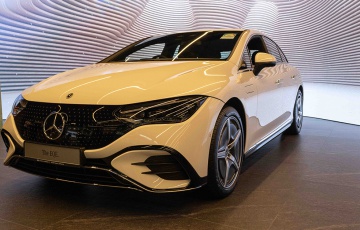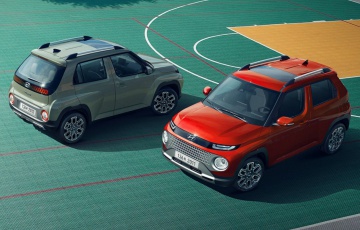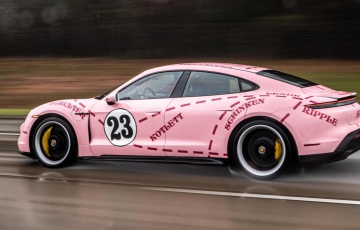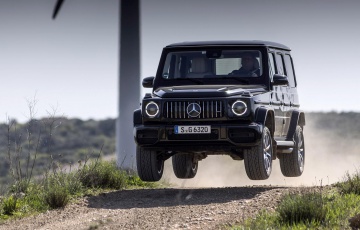TGS talks to: Yoshikazu Shida, CEO – Bridgestone Asia Pacific
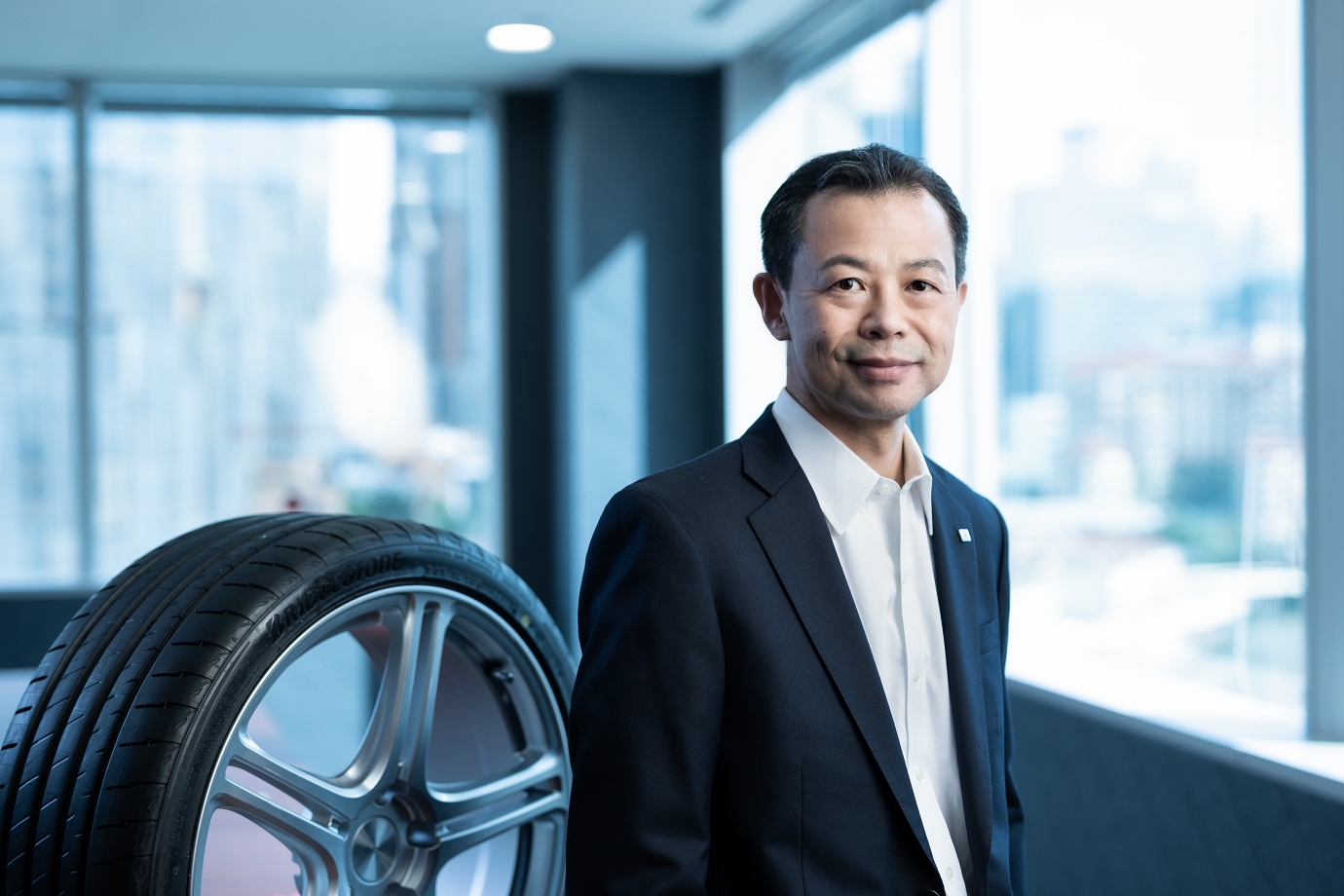
Top Gear Singapore (TGS): In the Asia Pacific region, which region accounts for the largest volume of sales? And for which specific tyre brand? (Potenza, Turanza, Ecopia etc.)
Yoshikazu Shida (YS): In terms of Passenger Replacement Tires (PSRs), Australia, Indonesia, Thailand and China are our bigger markets in the Asia Pacific region. The volume of sales for the individual tyre brands is reflective of the vehicle sales and trends across each market.
While our eco-friendly line of Ecopia tyres is one of our best selling product lines, we are also seeing increase in demand for our Alenza and Turanza tyres due to the rise in popularity of premium SUVs and steady increase in continental cars in the market. For the off-road enthusiasts, Dueler tyres continue to be a popular fixture for 4x4s, SUVs and trucks for challenging road terrain.
Despite the challenges faced in 2020 as a result of COVID-19, we expect to see the region regain some of its growth momentum going forward. There is increasing demand for vehicles, both new and secondhand, as well as increasing production of and dropping prices of rubber.
Countries in the region are also devoting more resources towards development of transport infrastructure such as roads, bridges and tunnels to increase connectivity across Asia Pacific. This, in turn, is further accelerating the growth of the tyre market in the region.
Top Gear Singapore (TGS): With the current market shift towards EVs and hybridised/electrified cars, what lies ahead for the future of performance tyres?
Yoshikazu Shida (YS): There will be a shift in focus towards more environmentally friendly and sustainable production of tyres as EVs and hybrid cars become the norm.
When designing for EVs, we take into consideration four vital points: reduction of rolling resistance coefficient (RRC) to reduce costs for electricity; bigger torque for improvement of wear performance; reduced noise from tyres which would be more noticeable due to the lack of noise from the engine; and reduction in the weight of the vehicle to account for the weight of the battery.
In designing our products to complement the different requirements of EVs, we have had to rethink tyre development and design from the ground up. For EV tyres, we have had to innovate for quieter tyres with our proprietary B-Silent technology to complement the quieter EVs, which do not have loud internal combustion engines.
The tyres also need to be lighter to conserve battery life. In July 2020, we collaborated with Volkswagen to equip our groundbreaking lightweight 'ENLITEN' technology to its all-electric vehicle ID.3. Applied to Turanza Eco tyres specifically for the ID.3, ENLITEN has allowed for super low rolling resistances, while requiring up to 2kg less raw material to produce.
Climate change and dwindling natural resources are pressing concerns for economies across the globe, and the development of sustainable mobility solutions is becoming the industry’s biggest priority at the moment. Like many of our fellow players in the mobility space, Bridgestone sees electrification as a promising path towards a more sustainable future.
This is not something we can achieve alone, which is why we are constantly looking to collaborate with leading innovators in the automobile and related industries, like we did with our long-term partner Volkswagen.
Top Gear Singapore (TGS): We understand that the Bridgestone Group is in the process of developing sensing technologies that are able to detect tyre wear rates and terrain information. Does Bridgestone have plans to integrate or sync its sensor technology, such as the CAIS (Contact Area Information Sensing) with existing manufacturers?
Yoshikazu Shida (YS): Yes, we do. In addition to CAIS, we have designed our own proprietary sensor technology, Smart Strain Sensor (SSS).
Both CAIS and SSS make use of sensors that are attached to the inside of tyres to monitor their condition during driving. CAIS is able to estimate tyre wear and measure tread depth and inflation pressure of the tyre, while SSS is able to estimate wheel axle load tyre condition, inflation pressure and temperature of the tyre.
Both technologies will be instrumental in enabling end-users to identify the most appropriate timing for tyre replacement, and also predict maintenance issues and improve overall safety and productivity for vehicle fleets.
The key differentiators for SSS are its longer battery lifespan and independence from speed, which means it can make reliable measurements even at low speeds.
These technologies are still under development and we will share more information closer to launch.
Top Gear Singapore (TGS): With numerous innovative technologies in tyre production methods, how and when do you foresee products such as Bridgestone’s “Air Free Concept” coming into production and being adopted for mass market use?
Yoshikazu Shida (YS): We’re particularly excited by the innovative technologies behind our ‘Air Free Tyres’. Essentially, a punctured tyre can bring about a rapid stop to a journey as well as pose a threat to road safety.
Our air free tyre leverages a proprietary design where tyre tread is placed on a unique structure of high-strength and flexible spokes. It does not need to be filled and maintained with air, so it eliminates any inconvenience and safety concerns associated with flat tyres or changes in air pressure.
The design of the air free tyres will reduce a lot of energy loss resulting from tyre rolling resistance and consequently reduce CO2 emissions. No part of the air free tyre will need to be disposed of, which goes hand-in-hand with our efforts to create a “cradle-to-cradle” system in which the entire tyre can be recycled and refashioned into new tyres in factories.
Apart from the advent of air free tyres for passenger vehicles, we also feel there is tremendous and more immediate value in bringing this solution to commercial fleets. An air free tyre would allow fleets to minimise downtime from tyre-related incidents and ultimately improve productivity.
In addition, the air free commercial tyre solution is designed to be retreadable. Retreads help reduce natural resource consumption by replacing only the tyre tread, rather than the entire tread and casing combination. With this in mind, we anticipate that air free tyres can lower the total cost of ownership for fleets.
At the moment, our Air Free tyre is still in the concept and development phase. It is difficult to prescribe a timeline at this stage for widespread use of air free tyres. An air free tyre solution would require rigorous testing and approval by regulators to ensure safety on the road.
In designing our products to complement the different requirements of EVs, we have had to rethink tyre development and design from the ground up.
Top Gear Singapore (TGS): Like many other industries, Bridgestone Corp’s stock has seen a steep decline during the climax of the COVID pandemic in 2020. What are the methods Bridgestone APAC has used to ensure a constant supply chain for customers globally?
Yoshikazu Shida (YS): COVID-19 has challenged supply chains in just about every market and industry worldwide.
The first major impact of COVID-19 was a sudden drop in demand, which in turn resulted in the need for a rapid reduction in our production output. This was particularly challenging for us – firstly because of the direct impact to our factory-based teammates, and also we had to find a way to manage our incoming raw material supplies given the fact that we had locked in orders two to four months in advance.
Simply rescinding on our contractual obligations is not an option, as it is not in line with our values and goes against how we wish to treat our suppliers as long term partners.
Solving this challenge took some creativity from our procurement and logistics teams as they had to find ways to delay or redirect shipments, store the inventory across our warehouses, or seek external capacity where needed.
At the same time, we had to pay attention to our supply base from a business continuity point of view given that our suppliers were also significantly impacted. As a result of these collective efforts, we have not lost a single day of production related to raw material supply issues.
In addition to this, and as a direct result of our long term strategy to create a regional manufacturing footprint, we were able to leverage our manufacturing capabilities across the region to provide us with the flexibility we needed to serve our customers effectively.
The challenges posed by the pandemic also served as a catalyst for us to start investing in capabilities to increase visibility of our end-to-end supply chain and managing our inventory more pro-actively in terms of both volume and quality. In parallel, we increased workforce flexibility at our plants and are now well-positioned to respond quickly to dynamic movements in the market.
Bridgestone continues to work with automobile manufacturers and other parties to contribute to the development of motorsports and societies that encourage enjoyable driving and riding...
Top Gear Singapore (TGS): Will Bridgestone ever make a return to F1?
Yoshikazu Shida (YS): Bridgestone has always been passionate about motorsports.
We continue to work with automobile manufacturers and other parties to contribute to the development of motorsports and societies that encourage enjoyable driving and riding, and are always monitoring global, regional and local motorsports events to find opportunities for us to showcase our technologies while gaining data for future product development.
We have been supporting many domestic and overseas motorsports ranging from top-level professional series to grassroots amateur races, primarily by supplying our POTENZA tyres for car races and BATTLAX tyres for motorcycle races.
Of note, we have partnered with the Indy Autonomous Challenge, the world's first head-to-head, high-speed autonomous racing competition among global universities, serving as the exclusive tyre supplier for the event, which is scheduled for October 23, 2021 at Indianapolis Motor Speedway.
We will also continue to serve as the title sponsor and a tyre supplier for the Bridgestone World Solar Challenge in Australia, which advocates sustainable mobility innovation through designing vehicles powered only by the sun. Unfortunately, the 2021 race was cancelled due to the current global pandemic situation, but we are set to continue supporting teams at future events through 2030.
For Japan we have pledged support for the TOYOTA GAZOO Racing 86/BRZ Race, the All-Japan Gymkhana Championship, the All Japan Karting OK Championship, and the All Japan Motocross Championship.
Bridgestone is committed to collaborating with innovative partners to pioneer active, intelligent and digitally integrated technologies that will improve the way people move, live, work and play. The harsh conditions and demands of motorsports have long been an important testing and proving ground for our innovations and designs, and these partnerships will continue to help drive the development of new products, services and sustainable solutions.
Top Gear Singapore (TGS): Given the ever-changing automotive landscape, what other new products does Bridgestone have in store for consumers?
Yoshikazu Shida (YS): In terms of new product launches, we are excited to be launching our brand new premium POTENZA Sport tyre in Asia later this year. As the successor of our POTENZA S007A – our flagship product and icon for the Sports vehicle segment – the new POTENZA SPORT tyre will continue to provide maximum performance with unsurpassed control on both dry and wet road condition, regardless of fast acceleration in a straight line or maneuvering quick sharp bends and hairpin turns.
Top Gear Singapore (TGS): Are there any other significant milestones Bridgestone has planned for the coming years?
Yoshikazu Shida (YS): As we advance towards our vision of providing social and customer value as a sustainable solutions company, one of our major objectives over the next few years is to help promote a circular economy across the value chain and our product life cycles. Our goal is to increase the use of recycled and renewable materials to approximately 40 per cent by 2030.
We are also working towards carbon neutrality in production and operations across all regions, with an aim to reduce all CO2 emissions by 50 per cent within the same timeframe.
In addition to our tyre business, we intend to add our solutions business to the core roster. Tyres will continue to be the main contributor, but we are aiming for our subscription model, retread strategy, Webfleet solutions and other growth businesses to contribute about 20 per cent of the business by 2030.
Another key focus is to improve road safety, especially as a path towards fully autonomous driving. Apart from our continued efforts to educate drivers in the region, we are also making use of our proprietary knowledge, tyre sensors and powerful simulation capabilities to address this goal by building a next-generation digital twin of the tyre. By simulating real-world conditions and on-the-road outcomes, we can identify, anticipate and address potential shortcomings of new tyre designs.
STORY Jay Tee
PHOTO Bridgestone






